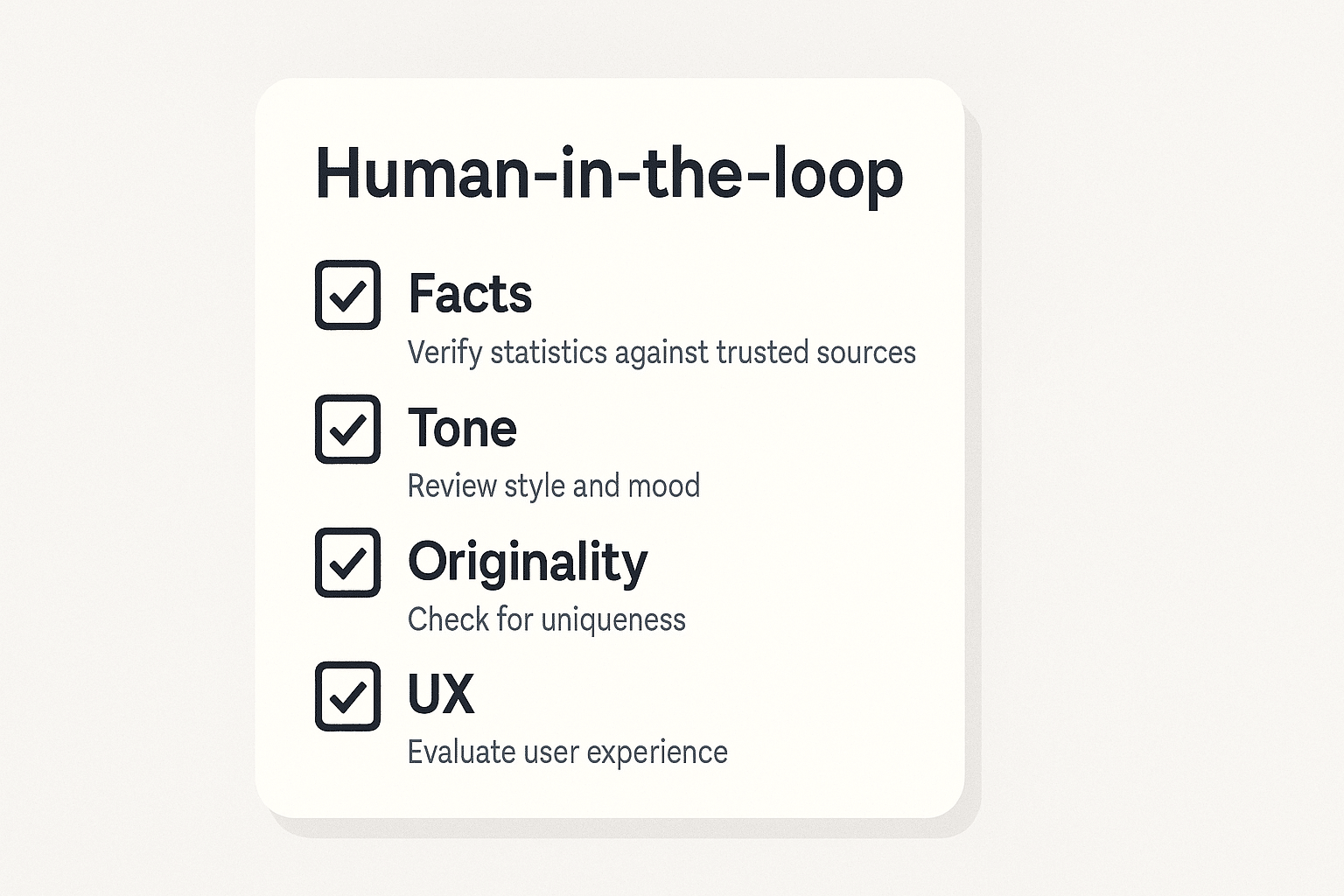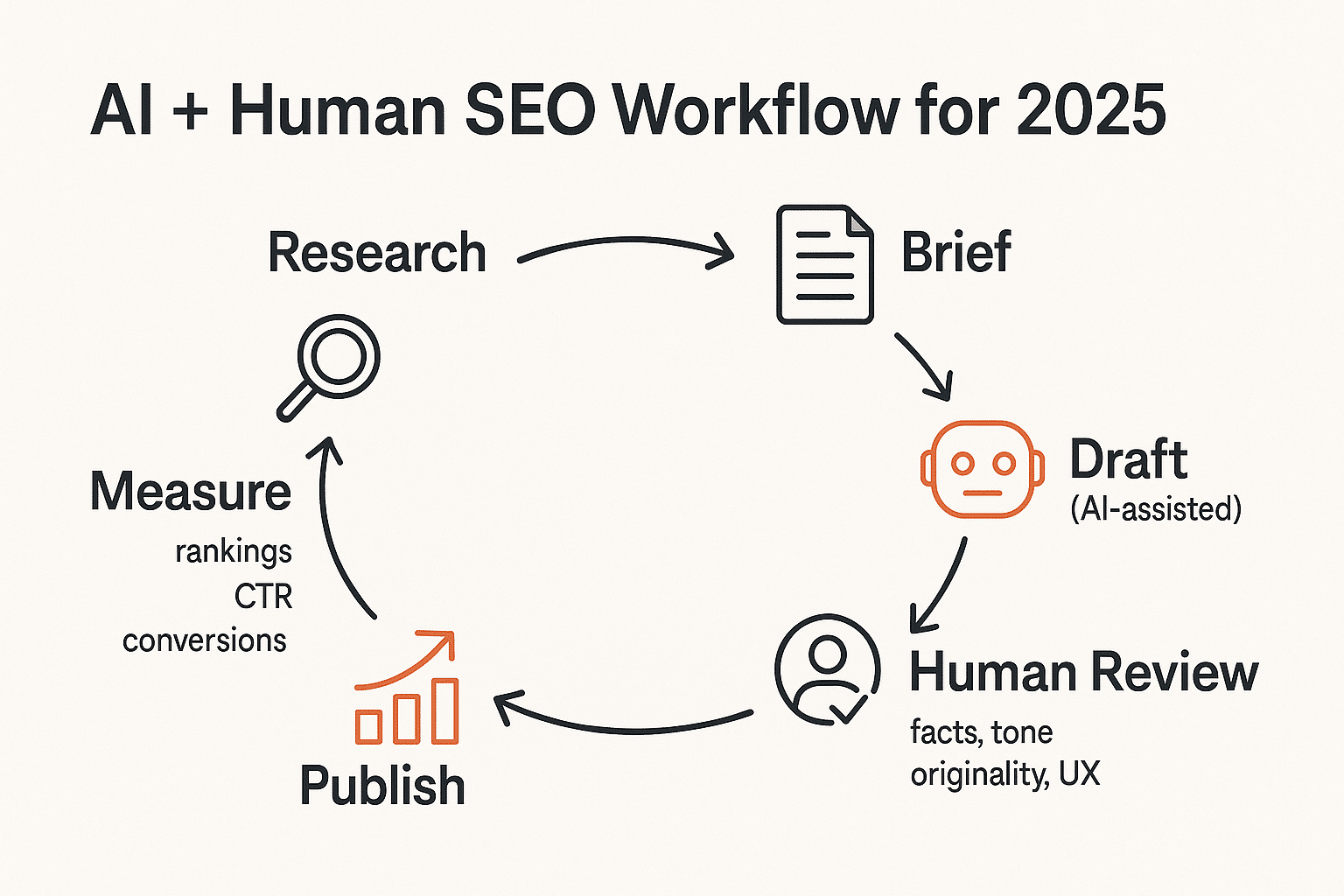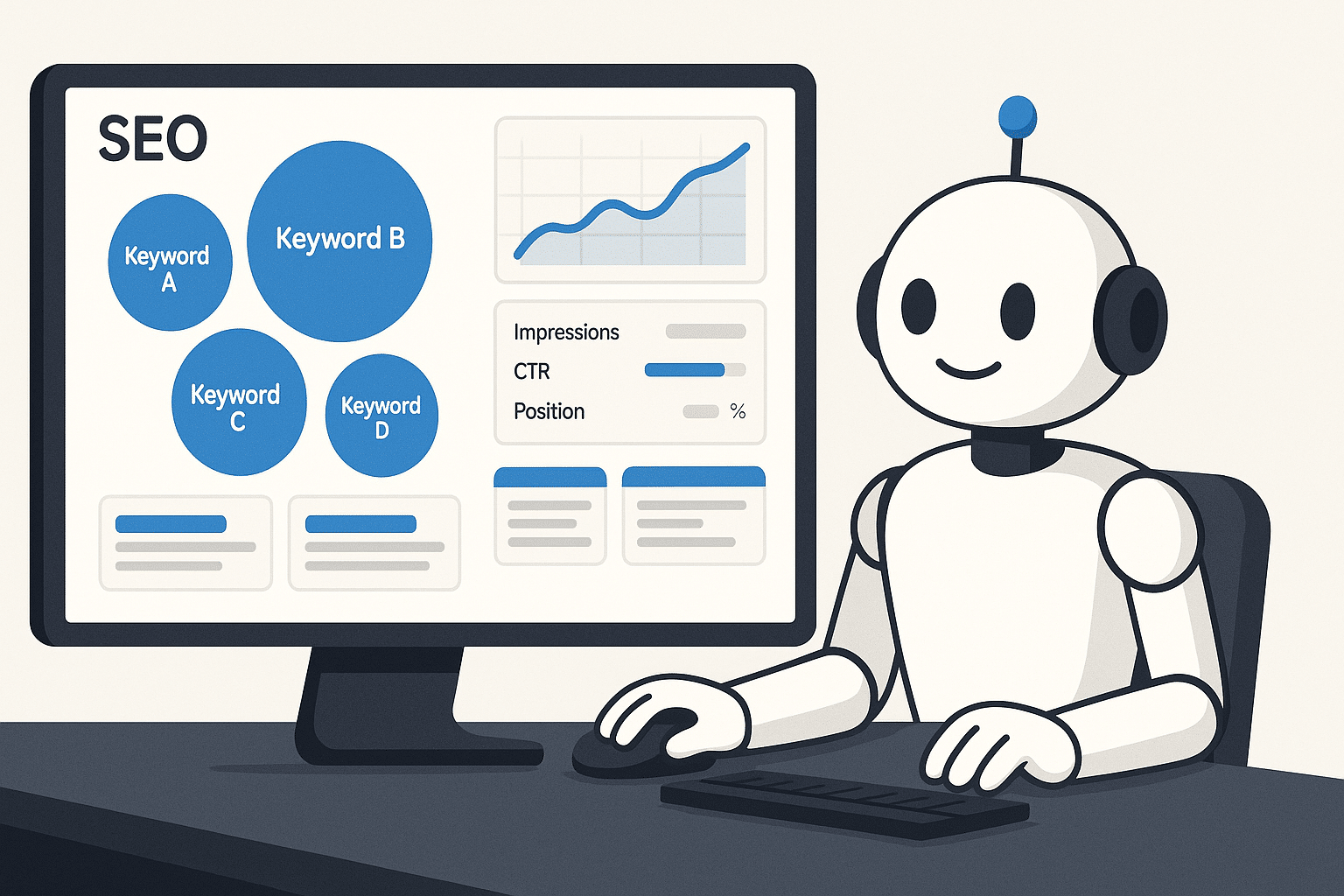Introduction
AI SEO tools are no longer shiny toys – they’re profit accelerators. By blending automation and insight, businesses can improve content velocity and conversion, not just rankings. In 2025 the race to harness AI will separate winners from laggards. With most Australian businesses already adopting AI and only 3 per cent remaining non‑digital ABS digital intensity index, this guide is your playbook to gain practical ROI from AI SEO tools.
Rapid AI adoption is evident: a CSIRO‑led report found 68 per cent of businesses have implemented AI and another 23 per cent plan to deploy within twelve months CSIRO report. This momentum underscores why SEO teams must learn to use AI responsibly – and why human oversight still matters. This article delivers straightforward steps to maximise return on investment in 2025.
What Are AI SEO Tools?
AI SEO tools are software services that assist with keyword research, AI content generation and SEO analysis. They use machine learning to cluster search terms, generate outlines and assess on‑page signals. Because they work at machine speed, they allow marketers to execute tasks in minutes rather than hours. However, they don’t replace human judgment. Google’s guidance emphasises that quality content demonstrating expertise, experience, authoritativeness and trustworthiness (E‑E‑A‑T) is rewarded Google Search guidance. Using automation solely to manipulate rankings violates spam policies, so you need to guide AI outputs with strategic intent.
Many tools also integrate with secure remote access systems so your distributed team can collaborate securely from any location. The CSIRO observed that automation across AI initiatives delivered an average 30 per cent time saving CSIRO report, allowing SEO teams to redirect hours into creativity and outreach.
Top AI Tools for Content and Keywords
AI SEO tools excel in different stages of your workflow. Here are the essential functions to prioritise:
- Keyword clustering & intent mapping: Group similar queries and identify user intent to focus on what searchers really need. Use this early to organise your keyword list and avoid duplicate content.
- Content briefs & outlines: Generate structured briefs and outlines tailored to target keywords. This accelerates writer onboarding and ensures coverage of key questions.
- SERP analysis: Automate analysis of search engine results pages to uncover ranking factors, featured snippets and content gaps. Use insights to optimise headlines and meta descriptions.
- Internal linking suggestions: Recommend contextual links between new and existing pages. This improves crawlability and boosts topical authority. Human review ensures natural links.
- Content scoring: Score drafts for relevance, readability and on‑page optimisation. Use scores to identify sections requiring more original insight or factual support.
- On‑page improvement ideas: Provide quick recommendations on headings, images and user experience. Pair these suggestions with manual tweaks to match your brand voice.
Remember, 50 per cent of Australian firms are at the baseline digital intensity and 37 per cent are developing; only 9 per cent have an established digital intensity ABS digital intensity index. Implementing AI ethically also requires governance: directors must understand where AI is used and strengthen controls AICD guide.
Balancing Automation with Human Review

Automation is fast, but it’s not infallible. A human‑in‑the‑loop approach ensures accuracy, legality and brand alignment. Boards currently have limited oversight of AI use and many organisations lack adequate controls AICD guide, so putting a repeatable process in place is critical. Follow this four‑step checklist every time you use AI to create SEO content. The CSIRO reports average time savings of 30 per cent across AI initiatives CSIRO report, but those gains evaporate if you publish inaccuracies or generic filler.
- Draft with AI: Use AI tools to generate your initial outline, keyword clusters and draft paragraphs. Let automation handle the heavy lifting so you can focus on strategy.
- Verify facts and citations: Check all data and claims against trusted sources. AI drafts can hallucinate; your reputation depends on accuracy. Add citations to strengthen trust.
- Add unique insights, data and brand voice: Inject your own expertise, local examples and tone. Differentiation is what turns generic text into a brand asset and builds authority.
- Optimise for user experience and internal links: Refine headings, add images, insert internal links and ensure the page is easy to navigate. Apply user‑first design principles to keep readers engaged.
15‑Minute Next Action
- In the next 15 minutes, pick one target keyword and use your preferred AI tool to generate a content brief.
• Review the AI draft, fact check at least three statements and add your own insights.
• Publish the piece and measure the reduction in time‑to‑publish and engagement metrics such as dwell time or click‑through rate.
Case Study: AI‑Driven SEO Campaigns
A software‑as‑a‑service business was struggling to keep up with competitors producing weekly thought leadership pieces. They needed to scale content without hiring more writers. By deploying AI SEO tools for keyword clustering, automated briefs and on‑page suggestions, the team increased content velocity from one to four articles per month. Human editors verified facts and added industry anecdotes. Within three months they captured first‑page rankings for five new intent‑matched keywords and saw qualified enquiry growth of 25 per cent. Time‑to‑publish dropped by 40 per cent and staff hours saved were reinvested in link building and outreach. For campaigns like this, partnering with a SEO agency Sydney can help amplify results.
Best Practices for 2025 (The Playbook)

The rules of 2025 are clear: AI isn’t optional, but human guidance remains non‑negotiable. Use this playbook to stay ahead:
- Intent‑first planning: Map keywords to user intent before prompting AI. This ensures each page answers a specific need and avoids cannibalisation.
- Prompt libraries and prompt hygiene: Maintain tested prompt templates. Avoid overloaded prompts that confuse AI and produce generic output.
- Originality guardrails & E‑E‑A‑T: Use plagiarism checkers and highlight where human expertise must shine. Google rewards content that demonstrates expertise and trust Google Search guidance.
- Internal linking automation with human audit: Automate suggestions but manually review anchor placement to preserve context and avoid over‑optimisation. AI can suggest connections you may have missed.
- Page experience improvements: Optimise for fast load, responsive design and accessibility. AI can suggest improvements but you must test across devices.
- Measurement cadence with weekly dashboards: Track rankings, click‑through rates, dwell time and revenue metrics weekly. Adjust prompts and topics based on data.
Ultimately, measure what matters: increases in qualified rankings, organic demo requests and assisted revenue. Report metrics weekly and iterate. With 53 per cent of large employers already at an established digital intensity ABS digital intensity index, delaying AI adoption means falling behind. To make the most of these tools, set up governance, train your team and embrace innovation. When you’re ready to accelerate growth, contact our team for a bespoke strategy.

